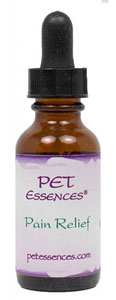Deer ticks - aka black legged ticks
Lyme disease in dogs caused by allergic reactions to deer tick bites
What is Lyme disease? | Black legged deer ticks' bites | Lyme disease symptoms
How is Lyme disease treated? | How do vets check for Lyme disease?
Can dogs be cured of Lyme disease? | Can my family catch Lyme disease from our dog?
How can I prevent my dog from catching Lyme Disease?
Deer tick bites are one of the risks that come with allowing dogs to run free. Lyme disease is transmitted to dogs from the bites of a deer ticks that have previously been infected with borrelia bacteria.
Forests, wooded areas, high grasses and even running water can all be places where dogs can pick up deer ticks.
While some tick bites cause no more than and an odd allergic "hot spot" or two, others can cause a whole range of extremely unpleasant and serious side effects. There is really no general rule, because every dog reacts in a different way to each and every tick bite.
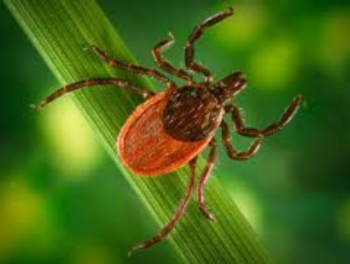
What is Lyme disease?
Lyme disease was first recognised in humans in 1977 and discovered in dogs in 1984.
The disease takes its name from the place in which it was first discovered - in Old Lyme, Conneticut, USA.
The disease is caused by a bacterium called "borrelia burgdorferi", which belongs to a family of bacteria called spirochaetes.
Lyme disease is most commonly found in the UK, Europe and in the North Eastern and Mid Western states of the United States. Depending in which country you live black legged ticks are also know as deer ticks and their Latin name is "ixodes scapularis".
Black legged deer ticks' bites
A tick becomes infected with borrelia bacteria by sucking and drinking the blood of hosts which carry the bacteria.
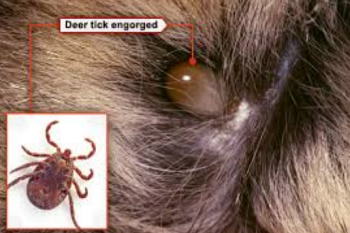
Typically their normal hosts are rodent type animals such, rats and voles, but they are not fussy and will latch on to any animal to feed.
A feeding tick is basically a blood sucker. In order to feed it must keep its host's blood from clotting, and therefore it regurgitates an assortment of enzymes to keep the blood flowing. It is during this regurgitation process that the Lyme spirochaete is brought up from the deer tick's digestive tract and into its mouth. And from there into the bloodstream of the dog it is feeding on
This whole process needs a minimum of 48 hours to take place, which means that if the tick is removed within 48 hours of attaching itself to a host, the spirochaete can't be transmitted. This is why diligent dog owners should make a regular habbit of checking their dogs for deer ticks shortly after coming in from walks.

To be on the safe side we recommend using Ark Naturals Neem Protect Spray on the skin surrounding the area from where the tick was removed. The spray has a soothing and healing effect and gives immediate relief from flea and tick bites.
You may also like to view our other allergy free and tick control/prevention products by clicking on our Allergy Free Products page.
If a tick should slip the net and remain on a dog for more than 48 hours, its system will be infected with borrelia bacteria and it could suffer an allergic reaction accompanied by Lyme disease symptoms.
An allergy happens when a dog's immune system creates antibodies and inflames in a way that is intended to assist the body to fight off infection. In the case of Lyme disease however, the body begins attacking itself rather than any outside threat.
Lyme disease symptoms
Most dogs infected with Lyme bacteria show no symptoms at all. Very often the condition is identified by a veterinarian during an annual check up.
It is not known why some dogs present with symptoms and others don't. Although generally speaking, the age at which dogs are infected by the bites of black legged ticks, has a lot to do with the onset of symptoms. Younger dogs tend to react more severely than mature ones do, most probably because they have had less time to build up an immunity
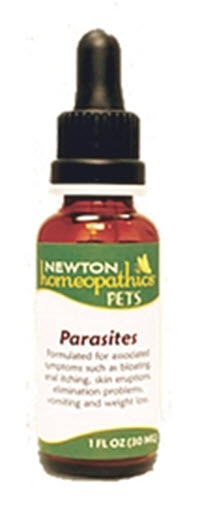
One of the difficulties of diagnosing Lyme disease is that Lyme disease symptoms resemble many other diseases e.g. arthritis/autoimmune disease. Some dogs can be affected with Lyme disease for over a year before they even start to show any symptoms, and sadly by this time the disease can be quite widespread throughout their bodies.
Depending on the advancement of the condition here are some of the symptoms to watch out for:
- Swollen joints, which are hot and painful to touch.
- Enlarged lymph nodes in the dog's shoulders and at the base of its legs.
- Lameness or limping and reluctance to/or unable to walk or do normal activities. When it walks, its gait will be more of a shuffle than a walk and very often it will arch its back, which is a reaction to pain.
- Fevers accompanied by high temperatures, usually between 102 to 105 degrees Fahrenheit - the normal body temperature of a healthy dog ranges between 100.5 and 102.5 degrees Fahrenheit.
- Lack of appetite followed by anorexia.
- Depression.
- Left untreated, Lyme disease can seriously affect other organs of the body such as the nervous system, heart and Kidneys and in extreme cases the condition is fatal.
How do vets check for Lyme disease?
To check for Lyme disease, your veterinarian will:
- Assess the clinical symptoms presented by the dog.
- Assess the risk of your dog's exposure, e.g. if he has ever been bitten previously by deer ticks.
- Run an in-house blood test called the SNAP® 4Dx® test. This test involves taking a drop of the dog's blood and screening it for Lyme disease and other parasites. The test provides an accurate result in just eight minutes.
How is Lyme disease treated?
Treatment of Lyme disease in its early stages is pretty straight forward, and therefore it is urgent to seek veterinary advice if you suspect your pet has been bitten by a tick or is showing symptoms of Lyme disease.
The American College of Veterinary Internal Medicine - recommends:
- A minimum 30-day treatment with a broad spectrum antibiotic called "doxycycline".
- The dog should be given a special diet formulated to minimise kidney damage.
Can dogs be cured of Lyme disease?
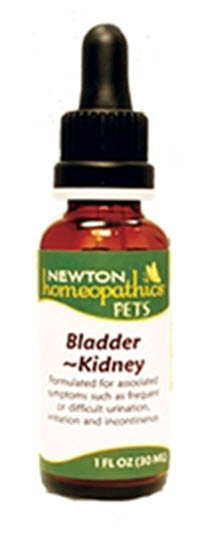
The bacteria which causes Lyme disease is extremely clever at disguising and hiding itself from a dog's body defenses. Therefore you can never really be sure if it has truly gone.
However, with the regular use of proper tick control/prevention products and the passage of time the Lyme disease bacteria will decrease in number and symptoms of the disease will dissipate.
Can my family catch Lyme disease from our dog?
No, your family can not catch Lyme disease from your infected dog. However, if the same tick which bit your dog bites a member of your family, then that person will become infected.
This is why reducing the risk of your exposure and your dog's exposre to deer ticks, and eliminating the ticks from your Home and Environment is so crucial.
It is important to remember that when out and about humans run the same risk of picking up deer ticks as their dogs, however humans react differently to dogs when infected with borrelia bacteria.
People infected with Lyme diseas can contract shingles and vice versa. It is not uncommon for people who have shingles to develop Lyme disease a few weeks or months down the track.
Here is a very helpful and reassuring link to help people avoid the dangers of coming in contact with black legged ticks and Lyme Disease:
It is a website created by "The Visitor Safety in the Countryside Group". It provides a wealth of information about Lyme disease with particular relevance to holiday makers, trampers, hikers and people who just want to enjoy a day in the countryside.
http://www.vscg.co.uk/good-practice/published/ticks-and-lyme-disease
How can I prevent my dog from catching Lyme Disease?
The best thing you can do for your dog is to minimise its risk of picking up deer ticks.
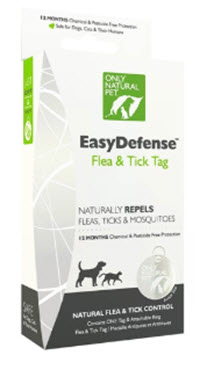
- Chose where you exercise it carefully.
- Check it each and every time you come in from walking.
- Clean up your gardens, lawns and yards and get rid of long grass and undergrowth. In fact trim back everywhere that ticks like to frequent.
- Check out our Home Flea Remedies page for natural products you can safely use around children, pets and plants in outside areas of your home to get rid of ticks. This page was originally written with fleas in mind, hence the title, however it is safe to assume that most products designed to get rid of fleas will also kill off any ticks lurking around.
- Use safe, effective and non chemical tick control and prevention products, e.g. Tags, Pendants, Squeeze-Ons, Shampoos & Conditioners and Sprays etc. Many of these products dual as flea control and prevention as well. Please take a moment to check out our Allergy Free Products page which offers a huge choice of Only Natural products.
- Consider Vaccination.
This article and information forms part of the Carole's Doggie World Holistic Library and is presented for informational purposes only.The information is not intended to be a substitute for visits to your local vet. Instead, the content offers the reader information researched and written by Carole Curtis for www.carolesdoggieworld.com






